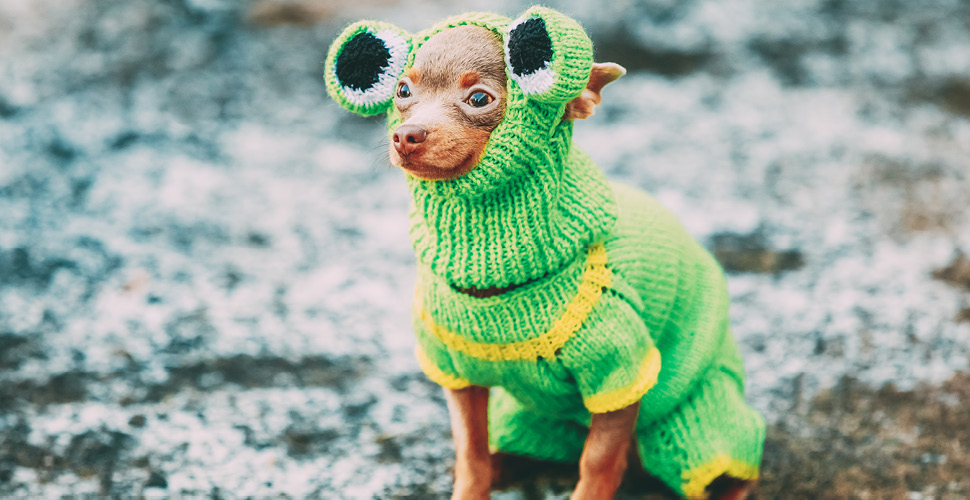You’ve heard the phrase, “if you’re cold, they’re cold.” But symptoms of hypothermia and frostbite can happen a lot faster than you may think. Even just a few minutes outside without proper protection can put your pet at risk for frostbite or hypothermia. This winter keep your pets safe by knowing the signs and symptoms of frostbite and hypothermia and what to do in the event that you notice your pet may be suffering.
Hypothermia: What is it?
Hypothermia is a condition that is a result of prolonged exposure to cold temperatures. Hypothermia is most common in short-haired animals and animals without proper shelter or a means to stay dry and warm during the cold, wet months of winter. When the body temperature dips too low and is unable to reheat, hypothermia sets in.
Hypothermia can cause injury to tissues of the body because of the decrease in blood flow and oxygenation. Hypothermia is extremely fatal.
Hypothermia Symptoms
- Decrease in heart rate
- Slow, shallow breathing patterns
- Lethargy
- Shivering uncontrollably
- Coma
Treating Hypothermia
If you suspect your pet is suffering from hypothermia immediately contact your vet or emergency care services. In the mean time, the ideal treatment for hypothermia is aimed at preventing further heat loss and rewarming your pet. It’s an extremely slow process and must remain so as to not shock your pet’s internal systems. While you wait for further instructions from your vet, you can follow these steps:
- Remove your pet from the cold environment and place into a warmer environment (bring them inside)
- Fill water bottles with warm water and place them around your pet
- Wrap the pet in warm blankets
Preventing Hypothermia
The best way to prevent hypothermia is to keep your pets warm and inside. If your pet likes to be outside when it’s cold, make sure that you provide proper shelter for them. A kennel or dog house is recommended. You can fill the kennel or dog house with straw, blankets or shredded newspaper to keep the interior and pet insulated. However, we never recommend or suggest you leave your pet outside for long periods of time, including overnight, when it’s cold out.
Frostbite: What is it?
Frostbite, like hypothermia, happens when you or your pet cannot keep yourself warm. Frostbite refers to the tissue damage that occurs when skin is exposed to freezing cold temps. Frostbite in animals and pets often occurs when a pet does not have sufficient shelter, is wet or injured.
The most common areas for a pet to suffer frost bite are the tips of the ears, tail, and feet.
Frostbite Symptoms
Frostbite in pets is not immediately evident or noticeable in the same way that hypothermia is. It can take up to 2 days for your pet’s symptoms to appear. Frostbite in your pet will look like swollen and painful tissue in the affected area. Frostbite disrupts healthy blood flow and impacts the nerve supply. As a result, the affected area will dry up and turn black in color within a week or so; eventually falling off.
Treating Frostbite
If you believe your pet has frostbite do not massage or rub the area as this can cause further tissue damage. Immerse the impacted area in warm water. Once you have carefully and gently thawed the area, use a protective bandage to prevent further tissue destruction. It will take a few days for the tissue to heal. Contact your vet for further instructions.
Preventing Frostbite
Having a warm shelter for your pet is essential for preventing frostbite. Additionally, avoiding leaving your pet outside for extended periods of time, especially overnight, during colder months. If your pet does like to be outside, set up a warm kennel or shelter for them to hangout in when cold. Fill it with blankets, straw, shredded newspaper or other warming agents to prevent your pet from touching the cold ground and freezing. We would never suggest or recommend that you leave your pet outside for extended periods of time during the winter.


